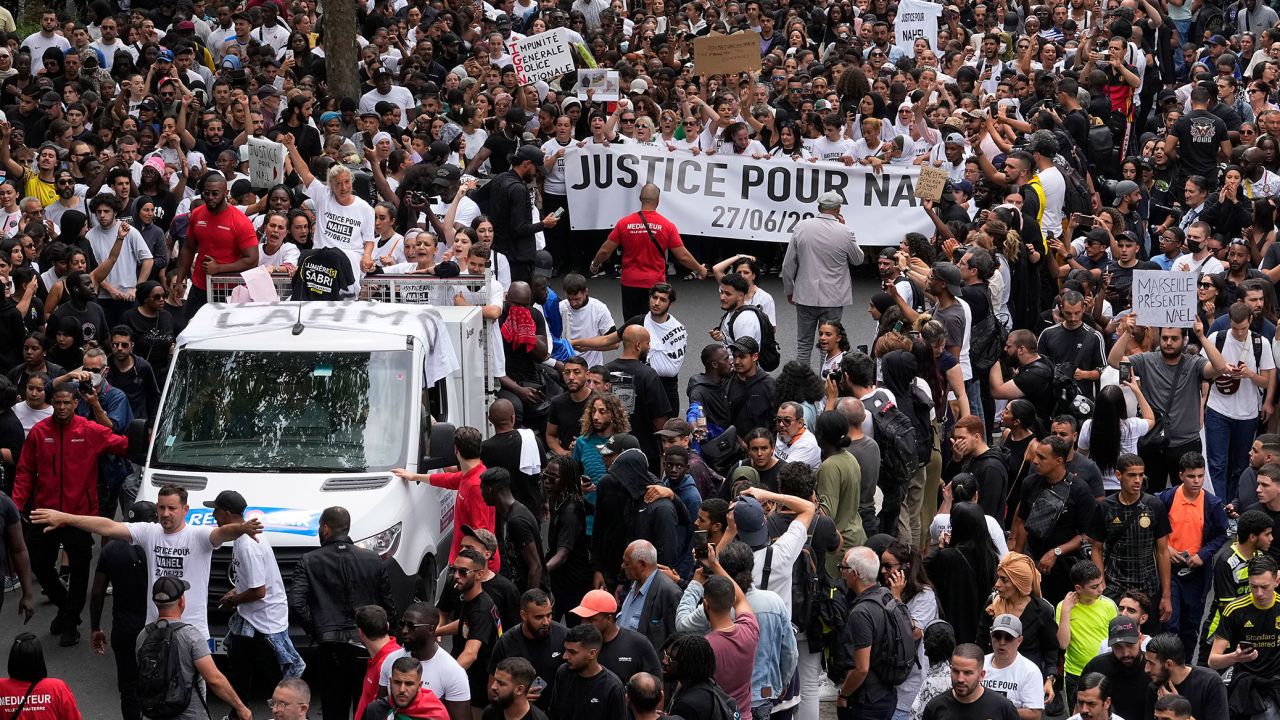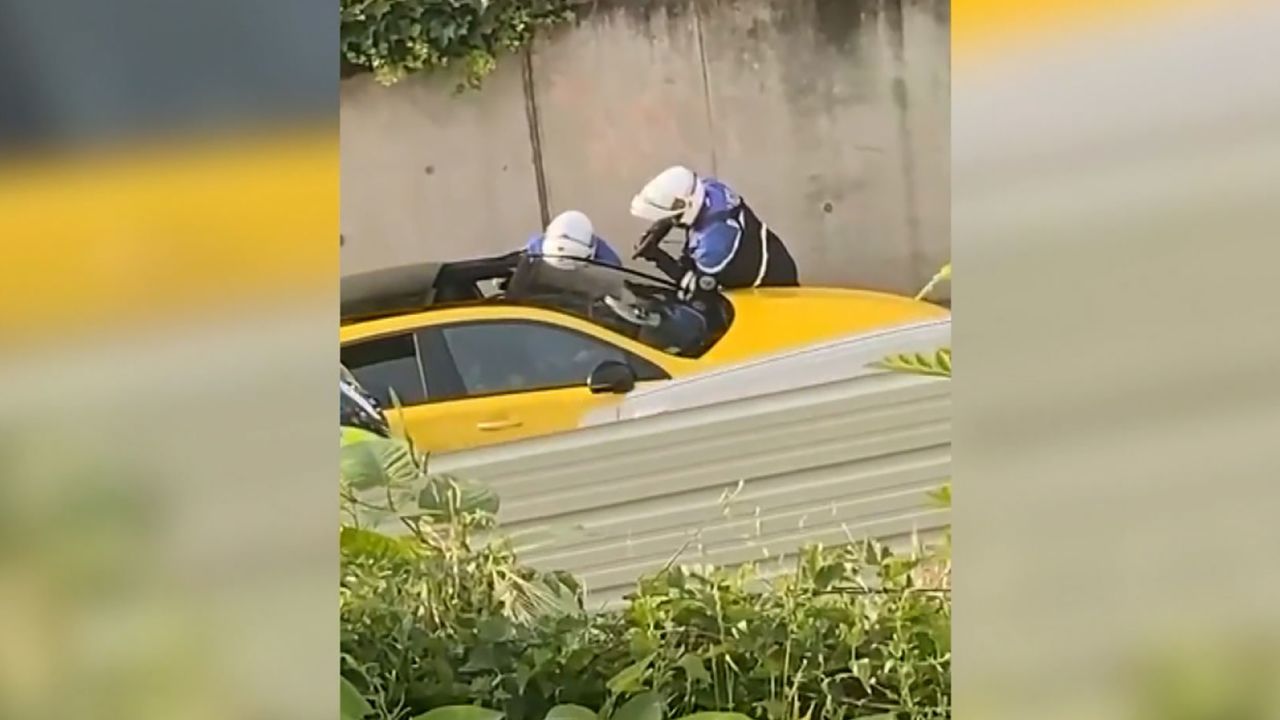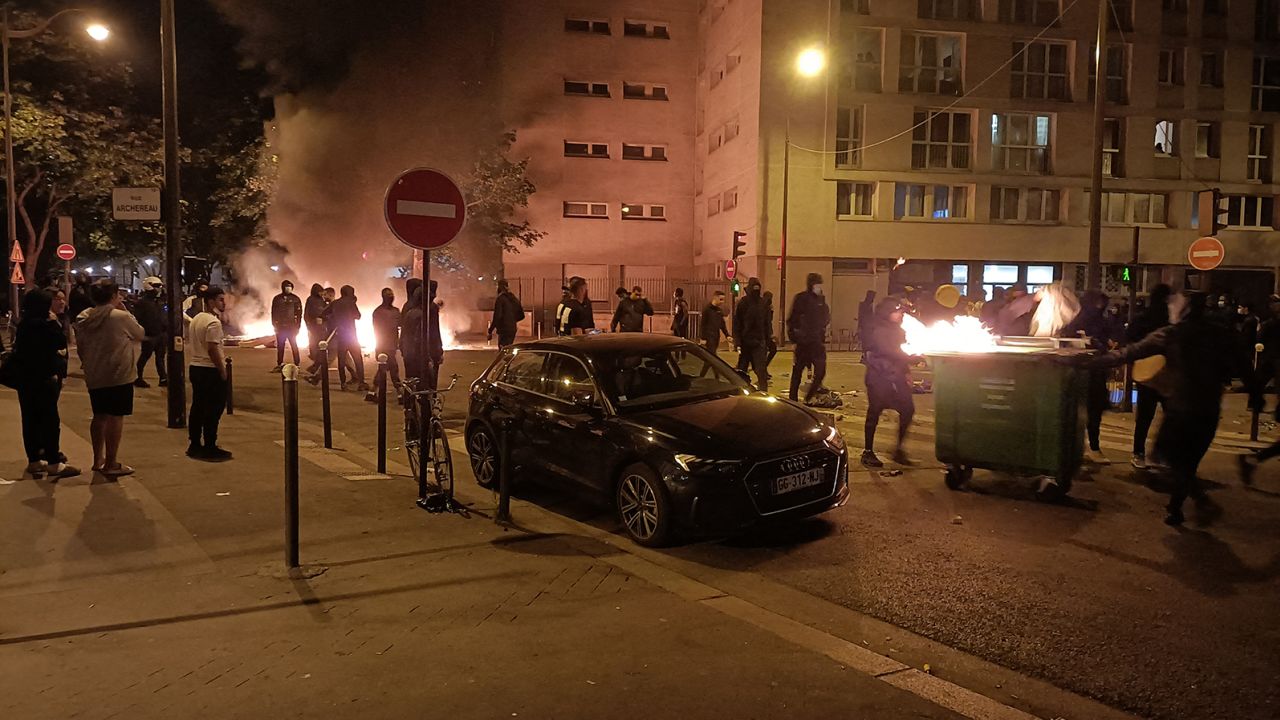"I Am Hurting For My France"
“On a general level, people tend to think there is no racism in France. And it’s one of the reasons people are so angry, because they feel and experience racism on a daily basis.""Despite that, they still face institutions, public discourse and media which still say that there is no racism and that the race debate does not belong in France. And that’s the reason people are so angry and so outraged."Journalist and racial equality activist Rokhaya Diallo"We have to go beyond saying that things need to calm down.""The issue here is how do we make it so that we have a police force that when they see Blacks and Arabs, don't tend to shout at them, use racist terms against them and in some cases, shoot them in the head."Dominique Sopo, head, campaign group SOS Racisme"The professionals of disorder must go home. [While there’s no need yet to declare a state of emergency — a measure taken to quell weeks of rioting in 2005] the state’s response will be extremely firm.""[Officers made more than 180 arrests before Thursday and there would] doubtless [be more].""[Street violence injured scores of police and damaged nearly100 public buildings -- the number of officers in the streets will increase from 9,000 to 40,000. In the Paris region alone, the number of officers deployed will increase to 5,000]."Interior Minister Gerald Darmanin
 |
| The mother of 17-year-old Nahel, seen at left on a truck, gestures during a march on Thursday. Michel Euler/AP |
France
is burning, once again. From the banlieues where ghettoes of
immigrants from the near east and the Maghreb tend to live in their
converted versions of the places where they were born, poverty exists,
joblessness, and hopelessness. Every now and again frustration and anger
boils over and roving gangs set fire to vehicles until the anger
subsides to more manageable levels. Crime festers in the banlieues,
gangs proliferate wildly and even when firefighters respond to fires
they would be attacked as 'foreigners' daring to enter Muslim enclaves.
The
brutal and hostile alienation owed, France's critics said, to the
racism, marginalization, lack of opportunity, poverty that France's
Muslim population lived within. And so the government began investing
huge sums into the areas of Muslim majorities, rebuilding
infrastructure, including public transit systems to enable the slum
dwellers to move about elsewhere, to feel free to travel, to reach
destinations other than their crowded, choked enclaves. Young people
were accepted into elite schools, encouraged to attend universities.
Not
much, it seems, has changed. The banlieue-dwellers still feel
victimized, still claim they feel the sting of racism, still run about
in gangs dealing drugs, challenging one another, and quickly assemble in
large protest mobs to loot and to charge the government with
discrimination. Night after night of violent demonstrations against
police in France, against authority in the country altogether. The
outrage this time may be national in scope, however, in the aftermath of
a shocking police shooting of a 17-year-old with no police record.
The
motorcycle officer who shot the boy named as Nael, in Nanterre, has
been arrested and charged. Casual video taken at the scene of a traffic
stop belies the story given by the 38-year-old officer and a companion
officer, that the vehicle the young man was driving erratically seemed
to be deliberately heading straight for them, and they feared the safety
of the public, while defending themselves. Footage, in fact, that
contradicts their story has been widely seen, feeding the public
outrage.
According
to Pascal Prache, the Nanterre prosecutor, two officers attempted to
stop
Nael because he looked so young and was driving a sporty Mercedes that
had Polish
licence plates, in a bus lane. He ran a red light to avoid being stopped
and became ensnared in traffic. Both officers involved said they drew
their guns to prevent him from fleeing. But the story initially given by
police sources that the teen drove at the two officers as they
attempted to stop him, has been disproven.
In
the video published on Twitter, the officers are shown at the side of
the yellow Mercedes AMG. The car had come to standstill in the press of
traffic. One officer stood there, his gun pointed at the driver and as
the vehicle moved off, the officer fired, shooting the driver in the
heart. Control of the vehicle was lost and it crashed, the 17-year-old
pronounced dead at the scene. A horror story. According to the victim's
family lawyers, just prior to the gunshot the officer was heard to say (in the video) "I'm going to put a bullet in your head". The second officer is heard saying: "Shoot him".
 |
| This screengrab from video posted on Twitter shows the moment when police interacted with a 17-year-old teen during a traffic stop in a Paris suburb. From @Ohana_Fgn/Twitter |
There
were two passengers in the car with the driver. One of them ran off in a
panic and has not been found. The other was arrested and then released
without charge. The aftereffect of the shooting and the public anger
could be measured in the reaction that ensued, with youths burning
garbage bins, smashing bus stops and attempting to set up roadblocks.
Others planned to protest outside local police stations with officers
responding by firing tear gas and rubber bullets.
Soon
other suburbs of Paris were experiencing rioting. A council building
was destroyed when a fire was set in Mantes-la-Jolie. And it was not
just banlieue residents who were protesting; expressions of disgust and
fury came as well from celebrities and politicians. "I hope that justice worthy of the name will honour the memory of this child",
stated The Intouchables film actor Omsar Sy. Adding his voice to that
of the captain of France's national football team and star player at
Paris Saint-Germaine. "I am hurting for my France", said Kylian Mbappe.
 |
| Protesters burn garbage bins and block a street during a protest in Paris on June 29. Fiachra GIBBONS/AFP/Getty Images |
Labels: 17-year-old Driver, Banlieues, France, Police Shooting, Public Order, Rioting

<< Home